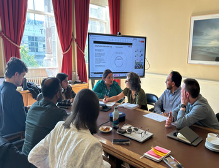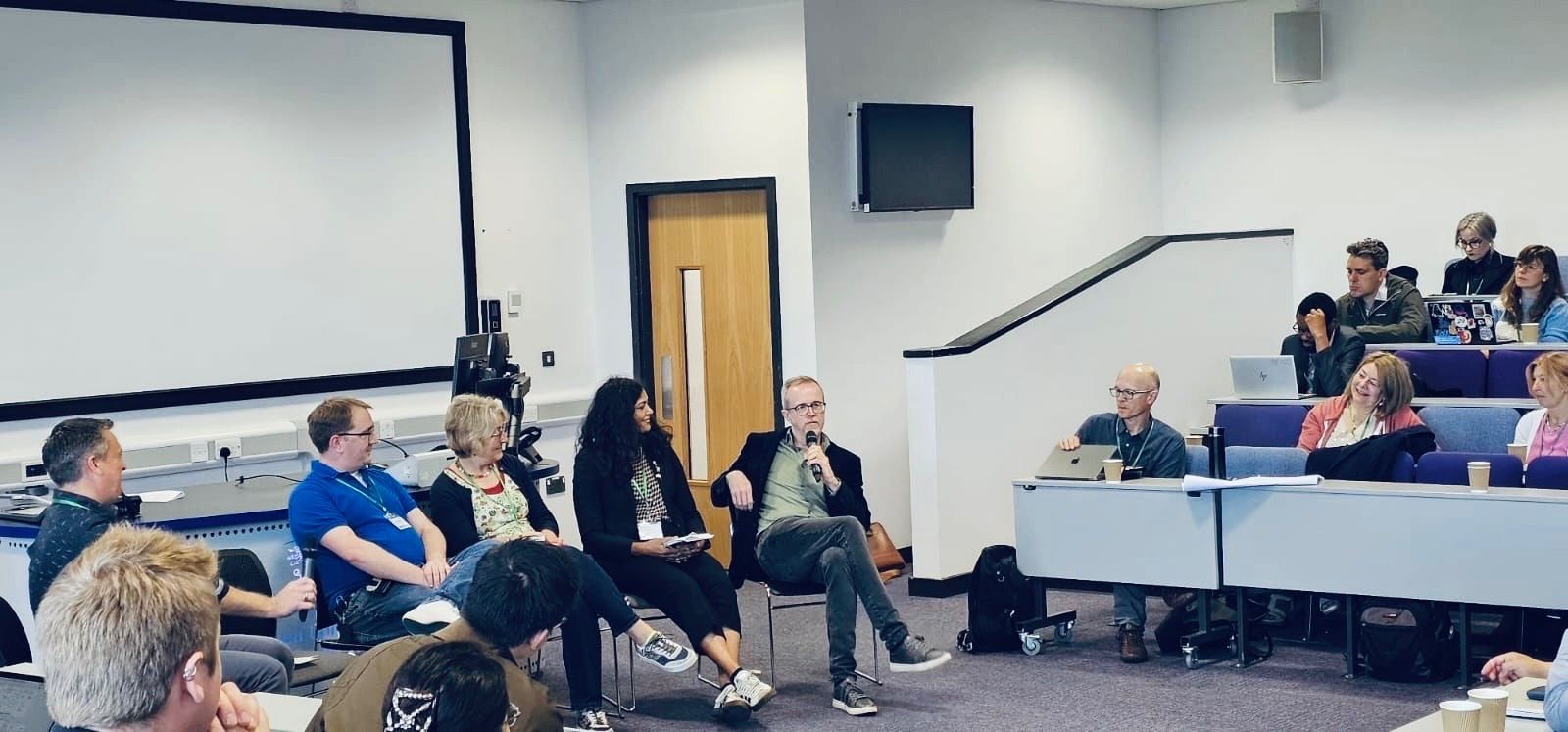Imagine that you are given a few minutes to evacuate from your home. Without prior warning, you are forced to make the choice of what to take with you and what to leave behind. It’s a nightmare scenario that we hope we never have to face. But, for many in Ukraine, it became a reality earlier this year as their towns and cities were invaded. The dire consequence of this action continues to inflict pain and suffering on large parts of the Ukrainian people, and we stand with them in their struggle.
As well as the personal impact, the question of what to save and what to abandon also had to be addressed by the Ukrainian government. As Russian forces began their offensive into Ukraine, a critical aspect of the response involved deciding what were the highest priority actions to ensure government services and infrastructure could be maintained. An important consideration at the centre of this dilemma was the ongoing digital transformation of Ukraine’s government and society. Indeed, the Ukrainian Government’s investments in digital technology now look to be hugely influential in their efforts to survive through these difficult times and rebuild in its aftermath.
Digital on the Front Line
I heard first-hand about Ukraine’s digital journey at a recent event in Dublin discussing the deployment of cloud technology in the public sector. Sponsored by AWS, my presentation on the challenges for public sector leaders engaged in digital transformation was joined by others reviewing the Irish government’s latest digital strategy initiatives and highlighting the Danish government’s recent digital technology deployment.
The activities were concluded with a panel session led by Liam Maxwell, AWS Director of Government Transformation and joined by 2 experts working with the Ukrainian government on its digital technology adoption. It was an inspiring conversation that focused attention on the digital journey being undertaken in Ukraine and described the essential role of digital technology on the front line of their current activities.
At the core of this effort is a recognition that digitizing government has been a vital component of Ukraine’s ability to continue to function throughout the past few months. While many have looked at countries such as Estonia and India as the primary examples of a rapid move to digitize digital operations, it has been in Ukraine that a more fundamental digital transformation has been taking place.
The impetus for the digital shift in Ukraine was a critical realisation: Government and industry must align for the mutual benefit of both communities. Mykhailo Fedorov, a 31-year-old founder of a digital marketing startup, was appointed as Minister to lead the Department of Digital Transformation aimed at digitizing government services and boosting Ukraine’s tech industry. He set up his team by hiring tech-savvy millennials with experience of delivering digital solutions. This encouraged adoption of ideas from Ukraine’s tech sector, powered by a tradition of excellence in technical education and a recent boom in outsourcing from more expensive countries.
With this foundation, Fedorov and his team began their work to redesign the Ukrainian government’s technology infrastructure. From listening to the panel discussions, and supported by recent articles discussing this journey, there appear to be 3 particularly relevant elements to their activities:
- Much of the early legwork focused on establishing a strong legal basis for the digital delivery of government services. It was based around a digital identity system that was valid and used everywhere in the country. Furthermore, in sensitive areas such personal data management, the need for clarity and consistency are essential. Local laws were adjusted with input from a variety of stakeholder. Important to this was to work with EU officials to ensure alignment with international standards.
- Developing the local IT sector has been important to ensure that digital skills and services are on hand. Its vital role is highlighted in its depth, with over 4000 tech companies, and breadth, from nanotechnologies and blockchain to AI and game development.
- To bring many of the digital initiatives together, the Diia mobile app and portal have been essential. From a user perspective, these act as the main channel to over 50 government services and allow users to access key documents such as a citizen’s identity card, passport, birth certificate, driving license, tax details, and so on. Crucially, the system was designed so that the digital documents accessed via Diia have the same legal status as their paper-based equivalents.
There is no doubt that during the past few years, citizens and businesses had already been benefiting from the digital transformation activities undertaken by the Ukrainian government. However, these investments came into their own with the Russian invasion of Ukraine in February 2022.
Into the Teeth of the Gale
Suddenly, everything changed. With the Russian invasion, the Ukrainian government recognised that it needed to move quickly to organise its forces, manage its resources, and mobilise its services to support citizens in the midst of this catastrophic disruption to their way of life.
Data preservation
First on the list was to try to capture data that was in danger of being lost or inaccessible. With the support of AWS, it was critical to try to save essential data from the Ukrainian government, educational organisations, banking system, and other core institutions. Lessons from the US troop withdrawal from Kabul have highlighted the dangers of leaving digital records behind. With the legal and technical foundations in place, it was now imperative to collect large amounts of digitally-stored data to ensure it was available to continue supporting citizens and businesses.
Within a few days of the Russian invasion, AWS provided “Snowballs” to collect data like a technological vacuum cleaner. Petabytes of data were sucked up to be rehosted in the AWS cloud. By Summer 2022, AWS was able to claim that it had “migrated 27 Ukrainian ministries, 18 Ukrainian universities, the largest remote learning K–12 school (serving hundreds of thousands of displaced children), and dozens of other private sector companies.” Within this time there were 61 government data migrations to AWS, with more expected to come. For these efforts, AWS was awarded a Ukrainian peace prize.
Digital warfare
Perhaps a more obvious source of digital concern, there was an immediate escalation of the Russian use of cyber attacks on Ukraine. Having experienced the chaos caused by the Russian cyber attacks on the power grid in 2015 and 2016, Ukraine was aware of the challenge they now faced. Consequently, strengthening its cyber protections were a high priority for Ukraine. Thankfully, companies such as Google have been swift to provide help and support for these efforts.
Additionally, the Ukrainian government understood that throughout the conflict digital technology would play a key role in many areas. As a result, over recent months it has been very active in appealing to Big Tech providers to stop providing its technology to Russian companies and government agencies. The impact has been immediate: Now much of the digital technology Russia requires is in very short supply. Similarly, by working with governments around the work, Russia has been subjected to significant sanctions. Many of these are explicitly aimed at reducing Russia’s capabilities to conduct digital warfare.
The power of the crowd
By increasing digital capabilities and practices across Ukraine in recent years, many citizens and businesses already operated in a digital-by-default mode. No surprise, then, that a key strategy in response to the invasion has been to use digital social media channels to appeal to its citizens and friends around the world to come to its aid. While this is a broad call for humanitarian and financial support, there have also been also specific requests for people to offer their digital services.
In effect, a volunteer “IT army” has been recruited to support the cyber defence of Ukraine and also to launch coordinated cyber attacks on Russia. It is estimated that over 300,000 people have joined this effort. Using channels such as Telegram, teams of volunteers have been removing Russian propaganda from social media channels, tracking Russian information sharing activities, and attacking key Russian websites and other targets.
The New Digital Frontier
It is easy to be caught up in the day-to-day issues of digital technology and its adoption. We’re so focused on our immediate concerns that we can lose sight of the bigger picture of the impact that digital disruption has on lives, livelihoods, and our way of life. That’s why it is important to take the time to consider the role of digital transformation from a much wider perspective. The conflict in Ukraine reminds us that the future of our society is now tightly bound to the digital journey we’ve undertaken. We all have a obligation to ensure we understand its effects and use this experience to encourage a more responsible approach to its use.





